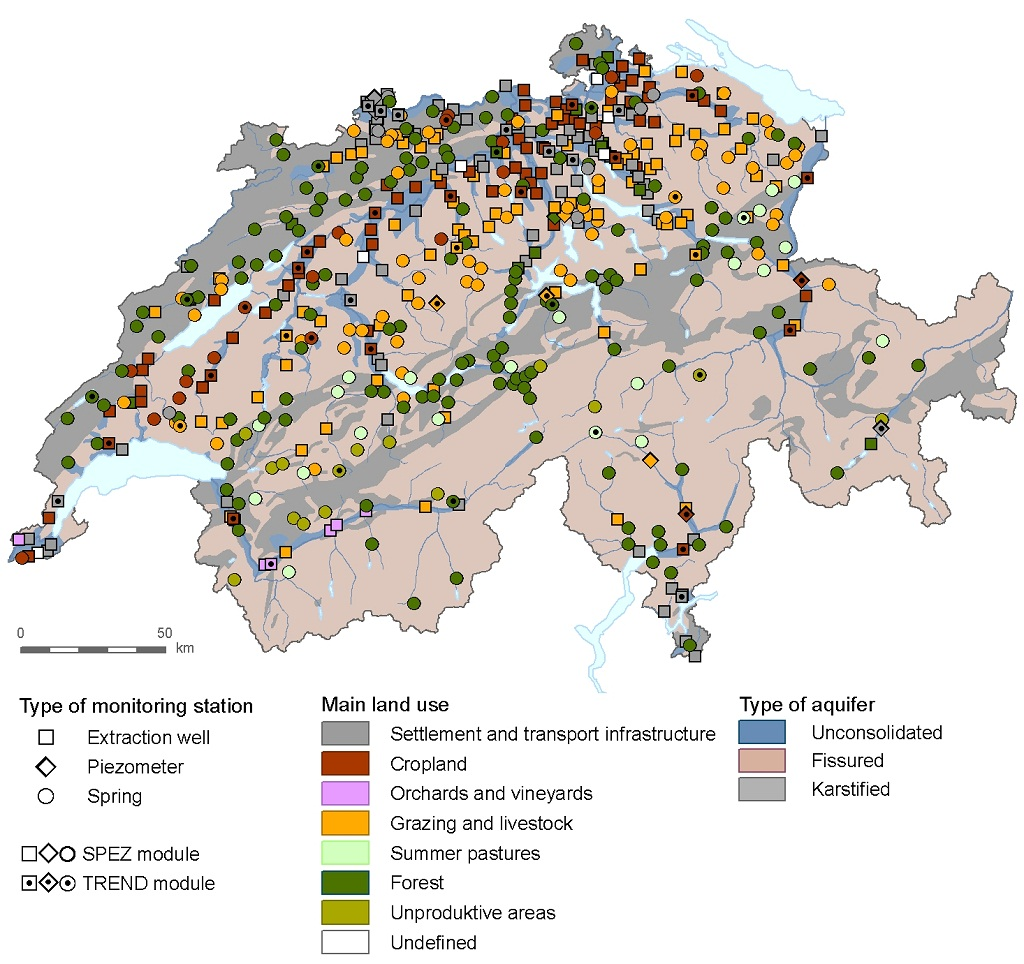The TREND and SPEZ modules of the NAQUA National Groundwater Monitoring record the state of and changes in groundwater quality across the Switzerland.
The TREND module comprises 50 monitoring sites situated in aquifer types which are typically found in Switzerland. These monitoring sites are characterised in detail. Thus, this module provides an understanding of the natural processes and human factors influencing the short and long-term development of groundwater quality. It has been operated by the confederation since 1997 and fully operational since 2005. Various organic and inorganic compounds and elements are studied, as well as the main substances in water, such as calcium, magnesium or hydrogen carbonate. In addition, water levels and spring discharges are recorded.
The SPEZ module is the base for all nationwide representative, statistical analyses of pollutants and contaminants in Swiss groundwater and their long-term development. It specifically focuses on substances originating from agriculture, industry, commerce, households and traffic. Nitrate, residues of pesticides and pharmaceuticals, as well as other organic trace compounds, such as halogenated hydrocarbons, are studied.
The SPEZ module comprises around 500 monitoring sites across Switzerland and has been operated since 2002 in close cooperation with the cantonal authorities. The monitoring sites cover the various regions of the country, the different hydrogeological features in Switzerland, and particularly the anthropogenic influences, which are recorded as soil use in the catchment area of the monitoring sites. The coordination of groundwater monitoring as part of the SPEZ module ensures that the data are recorded uniformly across the country, are comparable throughout Switzerland and are available continuously over the long term and with the same good quality.

(2015 status)
Further information
Links
Documents
-
GrundwasserprobenahmePraxishilfe. 2003
Priorisierung PSM-Metaboliten. Auswahl der Pflanzenschutzmittel-Metaboliten für das NAQUA-Monitoring im Grundwasser. (PDF, 940 kB, 09.12.2022)Artikel in "Aqua & Gas" Nr. 12/2022.
Last modification 09.12.2022





